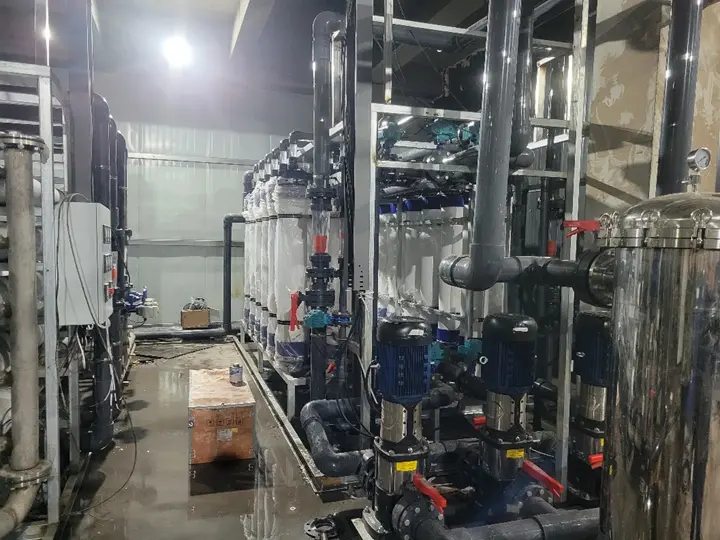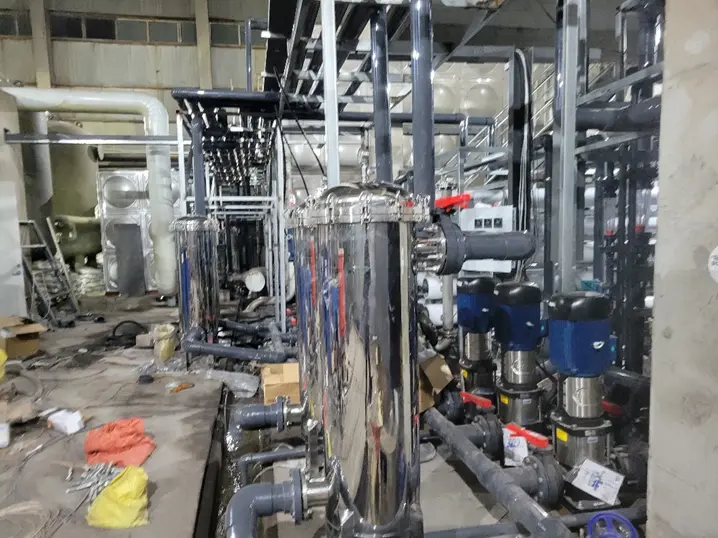Scenario: Boiler make-up water for an industrial workshop. The client required stable low-conductivity, low-silica permeate with automated operation and easy CIP. Total plant capacity is 2000 T/D (≈ 83 m³/h).
| Country / Site | Malaysia / industrial workshop (boiler make-up) |
|---|---|
| Total Capacity | 2000 T/D (≈83 m³/h), N+1 redundancy per skid |
| Process Train | Raw water conditioning → UF (SDI control) → RO (8040 brackish) → permeate tank → distribution to boilers |
| Bahan | UF housings & pretreatment FRP; RO high-pressure piping SS316; low-pressure piping UPVC/SS; frame SS304 |
| Kontrol | PLC + HMI; auto flush/start/stop; tank interlocks; conductivity & flow trending; differential-pressure alarms |
Design Basis & Targets
- Raw water: turbidity up to ~50 NTU, TDS 200–800 mg/L (seasonal variation).
- UF outlet: SDI ≤ 3, turbidity <0.3 NTU to protect RO.
- RO recovery: 70–75% with antiscalant and pH control; staged skids for stable flux.
- Permeate conductivity: ≤ 10–20 µS/cm for medium-pressure boilers (EDI/mixed-bed can be added if ultra-pure is required).
- Silika: reduced to boiler specification via RO plus dosing policy (site-verified).
Process Highlights
- UF barrier: handles turbidity spikes and stabilizes SDI → consistent RO ΔP and longer cleaning cycles.
- RO skid: 8040 BW elements; staged feed; VFD HP pump; permeate flush; dedicated chemical-cleaning ports.
- Chemical program: antiscalant, optional biocide, acid/alkali CIP loops; online pH/ORP for dosing safety.
- O&M: modular layout with clear access; spare-parts list and SOPs delivered.
Commissioning & Handover
- FAT at factory → SAT on site → 72-hour performance run with data trending.
- Training: daily checks, ΔP/conductivity/silica monitoring, CIP triggers and procedures.
- Documentation: P&ID, layout drawings, I/O list, SOPs, spare-parts list, preventive-maintenance plan.


